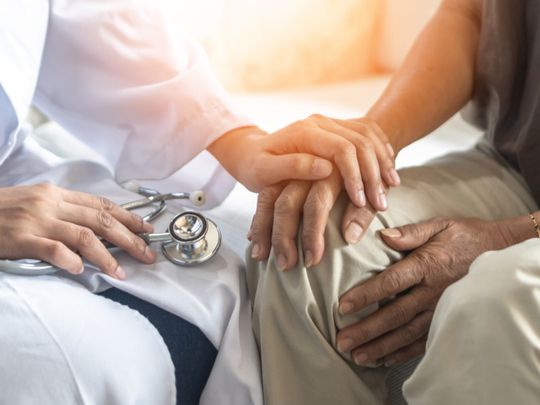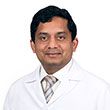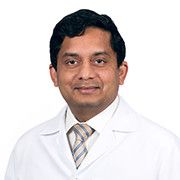
Dubai: A 45-year-old Bahraini expatriate, afflicted with early onset of Parkinson’s Disease, was literally bound to the wheelchair without heavy dose of medication owing to involuntary tremors. Early this year, she went in for a Deep Brain Stimulation (DBS), a revolutionary neurological procedure in India, to manage the tremors. But when COVID-19 struck, she was not able to get the electrodes programmed to give her the kind of stimulation she required.
At a loss on what to do, she approached Dr Pushpraj Shetty, consultant neurologist at Mediclinic Welcare Hospital. With his expertise in programming DBS electrodes, she began to walk, drive and swim, with her heavy PD medication being halved.
The patient has since returned to a normal life. “The whole procedure of DBS programming went well and it has relieved me from a lot of pain, made my movement easier, and it has reduced the amount of medication I take which in return has made me feel stronger and having more energy,” she said.
What is DBS?
Dr Shetty, who was previously doing DBS programming in India, has started doing the programming at the hospital in Dubai. He explained: “Deep brain stimulation involves implanting electrodes within certain areas of your brain. These electrodes produce electrical impulses that regulate abnormal impulses. This method is greatly effective in PD patients but also used for tremors in other disease like epilepsy. In PD one sees patients suffer from tremors, stiffness, rigidity, extreme tics and so on. DBS does not cure the disease but is able to help most of these symptoms, halve the medications and provide a good quality of life for the patient.”
“The amount of stimulation in deep brain stimulation is controlled by a pacemaker-like device which is like a battery, placed under the skin in the upper portion of the chest. A wire under the skin connects this device to the electrodes in your brain. The programming is carried out as and outpatient procedure and is completed under 30 minutes. Depending on their condition patients might want the programming to be tweaked to high or low stimulation from time to time. One can opt for a rechargeable battery that lasts for over 20 years or the non-rechargeable battery that requires to be changed every four years,” elaborated Dr Shetty
Dr Pushpraj Shetty
There are two aspects to DBS. The first involves the intervention by a neurosurgeon who places the electrodes and the second step involves the intervention by the neurologist who programmed the control device to ensure adequate stimulation.
A full-fledged DBS unit will be functional at the hospital next month and the team has already begun taking in more patients for assessment and analysis.














